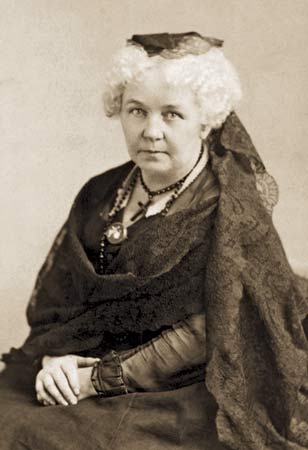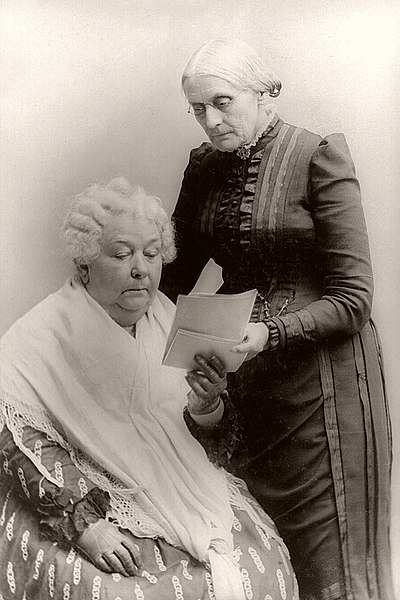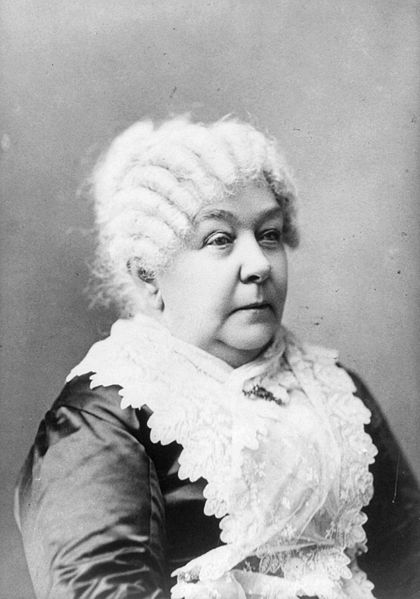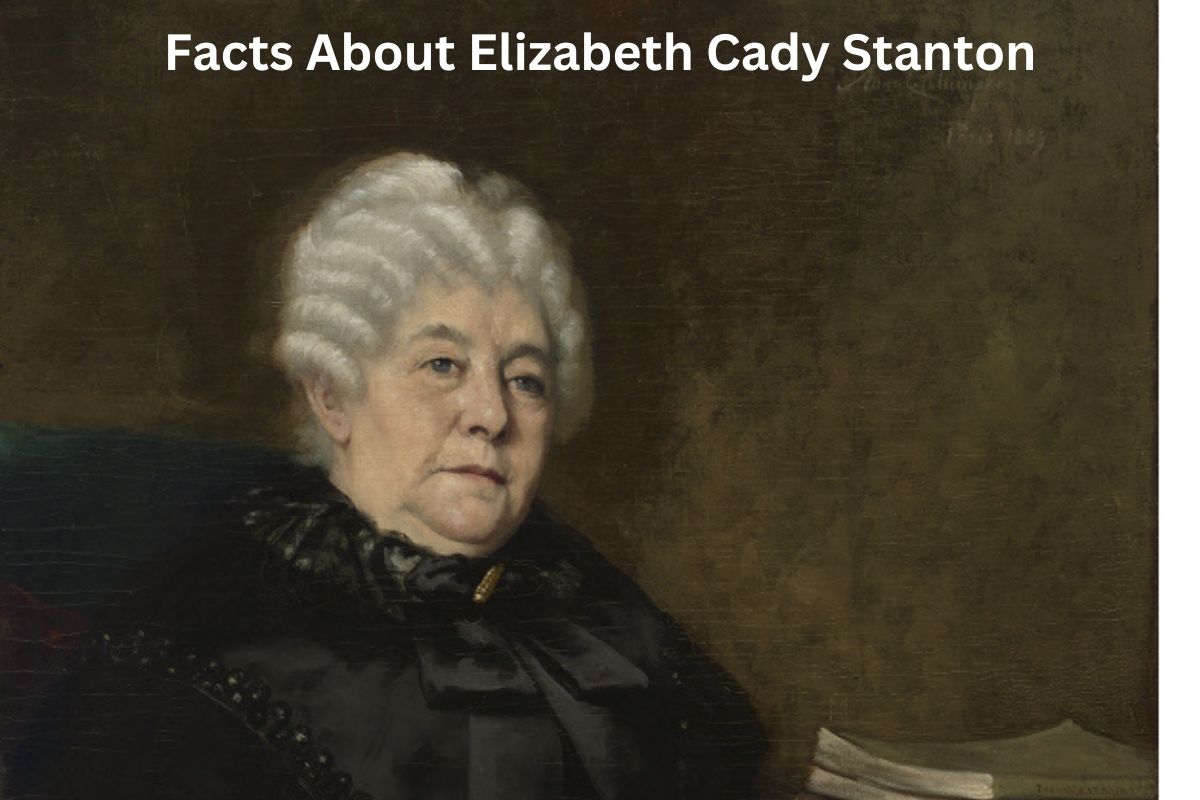Elizabeth Cady Stanton (1815-1902) was an influential American suffragist and social activist who played a pivotal role in the women’s rights movement.
Born in Johnstown, New York, Stanton co-organized the historic Seneca Falls Convention in 1848 and co-authored the groundbreaking “Declaration of Sentiments.”
She partnered with Susan B. Anthony and co-founded the National Woman Suffrage Association (NWSA) in 1869.
Stanton’s advocacy extended beyond suffrage to encompass issues like divorce, property rights, and education. Her tireless efforts and prolific writings continue to inspire and shape the feminist movement to this day.
Elizabeth Cady Stanton Facts
1. Born on November 12, 1815, in Johnstown, New York
Elizabeth Cady Stanton was born on November 12, 1815, in Johnstown, New York. She was raised in a privileged family and received a formal education, which was uncommon for women during that time.
Also Read: Elizabeth Cady Stanton Timeline
Her family background and education provided her with the foundation and confidence to later become a prominent figure in the women’s rights movement.

2. Prominent American suffragist and social activist
Elizabeth Cady Stanton’s contributions to the women’s suffrage movement and her tireless advocacy for women’s rights have had a lasting impact.
Her work laid the foundation for future generations of activists and played a pivotal role in shaping the modern feminist movement. Stanton’s courage, intellect, and unwavering dedication to women’s equality continue to inspire and empower women around the world.
Also Read: Accomplishments of Elizabeth Cady Stanton
Her vision and activism ultimately contributed to the passage of the Nineteenth Amendment in 1920, granting women the right to vote in the United States.
3. Co-organized the Seneca Falls Convention in 1848
Stanton is best known for her role in organizing the Seneca Falls Convention in 1848. The convention was a seminal event in the history of the women’s suffrage movement in the United States.
It was held in Seneca Falls, New York, and attracted both men and women who were committed to advocating for women’s rights.
Stanton, along with Lucretia Mott, played a key role in planning and organizing the convention, which drew significant attention and marked the beginning of a focused effort towards achieving women’s suffrage.
4. Co-authored the “Declaration of Sentiments” at the convention
At the Seneca Falls Convention, Stanton co-authored the “Declaration of Sentiments.” This document, inspired by the Declaration of Independence, outlined the grievances and demands of women who sought equal rights.
The declaration famously proclaimed that “all men and women are created equal” and called for women’s right to vote, as well as for the removal of various legal, social, and economic inequalities faced by women.
The “Declaration of Sentiments” served as a powerful catalyst for the women’s rights movement and inspired subsequent activism for gender equality.

5. Partnered with Susan B. Anthony in the women’s rights movement
Elizabeth Cady Stanton formed a remarkable partnership with Susan B. Anthony, which lasted for over 50 years. Stanton provided the intellectual and philosophical framework for the women’s rights movement, while Anthony focused on organizing and mobilizing supporters.
Together, they became a formidable team, working tirelessly to advance women’s suffrage and other women’s rights issues. Their collaboration played a crucial role in driving the movement forward and gaining widespread support.
6. Criticized the Fourteenth and Fifteenth Amendments
Stanton was a vocal critic of the Fourteenth and Fifteenth Amendments to the United States Constitution. While she supported the abolition of slavery, she fiercely opposed the amendments as they granted citizenship and voting rights to African American men but excluded women.
Stanton argued that women should not be left behind in the struggle for equality and believed that women’s suffrage should have been included in the amendments.
This perspective led to some division within the women’s rights movement, as others felt that it was necessary to prioritize the fight for African American men’s suffrage before pursuing women’s suffrage.
7. Ran as an independent candidate for the U.S. Congress in 1868
In 1868, Stanton made history as the first woman to run for a seat in the United States Congress. She ran as an independent candidate for the House of Representatives from New York.
While her candidacy did not result in victory, her campaign was significant in challenging the traditional gender roles and expectations of women during that time. Stanton’s run for Congress highlighted her determination to break down barriers and assert women’s political rights.
Her candidacy paved the way for future women seeking political office and helped to expand the notion of women’s participation in public life.

8. Co-founded the National Woman Suffrage Association (NWSA) in 1869
In 1869, Elizabeth Cady Stanton co-founded the National Woman Suffrage Association (NWSA) alongside Susan B. Anthony. The NWSA was formed with the primary goal of securing women’s right to vote through a constitutional amendment.
Stanton served as the president of the organization from its inception until 1890 when it merged with another suffrage group.
The NWSA played a pivotal role in advocating for women’s suffrage and promoting women’s rights through various campaigns, lobbying efforts, and public speaking engagements.
9. Advocated for women’s rights beyond suffrage
Stanton’s advocacy extended beyond suffrage to encompass a wide range of women’s rights issues.
She believed in a comprehensive approach to achieving gender equality and fought for women’s right to divorce, property rights, employment opportunities, and access to education.
Stanton understood that true equality required addressing the social, economic, and legal barriers that constrained women’s lives. Her advocacy expanded the conversation around women’s rights and laid the foundation for future activism on a broad range of issues.
10. Prolific writer, author of books such as “The Woman’s Bible” and “Eighty Years and More: Reminiscences 1815-1897”
Stanton was a prolific writer and author. Her most notable works include “The Woman’s Bible” (1895) and “Eighty Years and More: Reminiscences 1815-1897” (1898).
“The Woman’s Bible” was a controversial book that challenged traditional interpretations of the Bible that perpetuated women’s subordination. It critiqued the oppressive and discriminatory passages and aimed to reclaim a more egalitarian understanding of women’s place in religious texts.
“Eighty Years and More” is Stanton’s autobiography where she reflects on her experiences, the progress of the women’s rights movement, and the challenges faced along the way.
